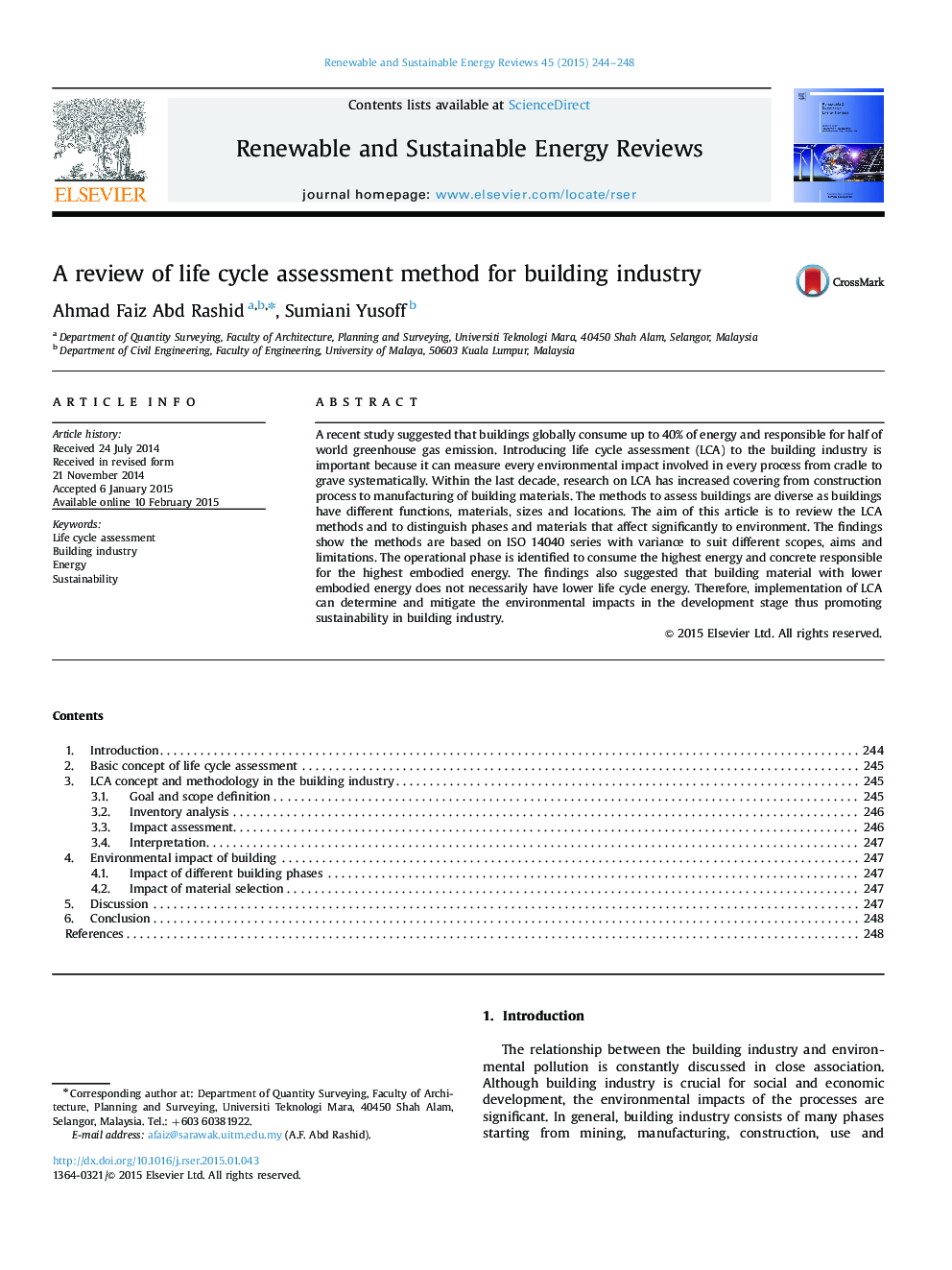| Article ID | Journal | Published Year | Pages | File Type |
|---|---|---|---|---|
| 1750045 | Renewable and Sustainable Energy Reviews | 2015 | 5 Pages |
A recent study suggested that buildings globally consume up to 40% of energy and responsible for half of world greenhouse gas emission. Introducing life cycle assessment (LCA) to the building industry is important because it can measure every environmental impact involved in every process from cradle to grave systematically. Within the last decade, research on LCA has increased covering from construction process to manufacturing of building materials. The methods to assess buildings are diverse as buildings have different functions, materials, sizes and locations. The aim of this article is to review the LCA methods and to distinguish phases and materials that affect significantly to environment. The findings show the methods are based on ISO 14040 series with variance to suit different scopes, aims and limitations. The operational phase is identified to consume the highest energy and concrete responsible for the highest embodied energy. The findings also suggested that building material with lower embodied energy does not necessarily have lower life cycle energy. Therefore, implementation of LCA can determine and mitigate the environmental impacts in the development stage thus promoting sustainability in building industry.
